Reviews
Stanley Kubrick
USA, 1951-53
Credits
Review by Cullen Gallagher
Posted on 01 March 2010
Source bootleg DVD
Categories Kubrick
A truly original person with a truly original mind will not be able to function in the old form and will simply do something different. Others had better think of the form as being some sort of classical tradition and try to work within it.
—Stanley Kubrick, The Observer Weekend Review, December 4, 1960
Your own style, if you get a chance to make a film, is really a result of the way your mind works.
—Stanley Kubrick, Eye, August 1968
It is tempting to want to look back at the early films of Stanley Kubrick and search for hints of the greatness that was to come, to find the seeds of a style that would germinate into the distinctive, inimitable aesthetic of his later films. This not only puts undue pressure on his first films - qualitative and formalistic expectations that can hardly be met - but also denies Kubrick the room to experiment, to succeed, and even to fail. He may have been a professional photographer for Look magazine when he began making movies, but he was also an amateur filmmaker, adapting his skills from one field to another, and educating himself as he went along. One of the values of looking at the first works of great filmmakers (or artists in any field) is not always to find mastery but also, in some cases, mediocrity. Seen in this light, Kubrick’s first three films - Day of the Fight, Flying Padre, and The Seafarers - are as interesting for what they anticipate in his later oeuvre as for what they do not.
In 1951, intent on breaking into the film world, the twenty-three year old Kubrick decided to adapt one of his most celebrated spreads from Look. “Prizefighter” originally ran in the January 18, 1949 issue and encompassed nineteen photographs of middleweight boxer Walter Cartier. Its “day in the life” narrative began in the morning at his apartment in Greenwich Village and followed him until the big fight that night. Kubrick adopted the same temporal structure for the film Day of the Fight, and from the very beginning made “time” a driving thematic force in the film. “This is the story of a fight and a fighter. Walter Cartier. And today is the fight,” announces the narrator. “Tonight at 10 o’clock will be one of the moments which justify his difficult life.” Coupled with the opening shot of posters for the fight in an alley at dawn and the unsettling orchestral score, Kubrick charges the atmosphere with a fatalistic angst that makes us as nervous and uncertain as Cartier. “He is rapidly climbing to the middleweight championship of the world and he must keep winning,” the narrator reminds us. “It’s a long way until night…”
Day of the Fight is a remarkably assured debut, and its stylistic confidence and innovative approach to the newsreel format belies the youthful experimentation and on-the-spot education of its maker. The black-and-white cinematography is intimate and spontaneous, and the shots recall the compositional dynamics of Kubrick’s still photography. It is worth noting that Kubrick was not only the director of Day of the Fight, but also its producer, writer, cinematographer, and sound recorder. As David Hughes recounted in The Complete Kubrick, “Kubrick used the savings from his tenure at Look magazine, along with whatever money he could borrow from friends and relatives, to finance the film, which cost a total of $3,900—around $1000 to shoot the film itself, and the rest to finance post-production.” Perhaps his own personal stake in the film allowed Kubrick to better identify with Cartier’s pre-fight anxiety, as nearly every shot - no matter how seemingly domestic or tranquil - is imbued with dread, anticipation, and nervous energy. The culminating bout is raw and impassioned, with the camera alternating between long-shots from outside the ring and closer shots that put the camera right in there with the fighters, filming them from the floor and looking right into their faces as they exchange blows. Despite the personality and polish of Day of the Fight, Kubrick had a difficult time selling the film. It was eventually picked up by RKO for $4000, just $100 more than Kubrick had spent on the production.1
After the impressiveness of his debut, Kubrick’s next two documentaries pale by comparison. Perhaps it is because they were merely assignments - projects accepted to keep Kubrick working and, in the case of the lackluster The Seafarers, to pay the bills on his first feature, Fear and Desire - but they lack the vision and originality of Day of the Fight. Even though it was made second, Flying Padre would ultimately be the first film of Kubrick’s to grace the big screen. Made as part of RKO’s “Screenliner” series of short films, Flying Padre tells the story of Reverend Fred Stadtmueller who uses his propeller airplane (“The Spirit of St. Joseph,” named after his church) to perform his duties in remote locations. Even the climactic saving of a sick child fails to liven up this dry story. Kubrick’s direction is solid but largely undynamic.
Likewise, The Seafarers, an industrial film about the International Seafarers Union released in 1953, is a rather dull and longwinded exercise in promotional propaganda. Funded by it subject, the ISU, the film takes pleasure in showing off clean galleys, cafeteria trays stacked high with food, orderly offices, and a homogenous (and almost entirely white male) group of Seafarers who smile contentedly and await their assignments. During the interim, they can “shoot the breeze, write a letter, read a book, or take a look at works of art by fellow Seafarers, carvings and paintings done aboard ship, some good enough for any gallery,” reminds the monotonous narrator, Don Hollenbeck. The tone of the film is so consistently insipid that that it is tempting to take the one seemingly inspired bit of editing - following the narrator’s statement by juxtaposing staid paintings of ships with more sensual sketches of women clothed in towels - at face value and read nothing more into it than earnest self-promotion.
As Kubrick stated in Eye magazine, “Even though the first couple of films were bad, they were well photographed, and they had a good look about them, which did impress people.”2 Regardless of their many flaws, Flying Padre and The Seafarers are professional (if anonymous looking) films. The self-trained twenty-five year old filmmaker had succeeded in adapting himself to the medium of cinema with amazing speed and cunning. After the family and friends financing of his first effort, he was able to receive commissions for his second and third films. And while he would have to go back to the proverbial address book to raise money for his first feature, by this point Kubrick had already proved that he had the talent, imagination, resourcefulness, and perseverance to be a filmmaker on his own terms.
More Kubrick
-
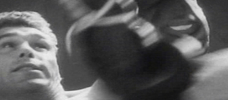
Stanley Kubrick’s Early Documentaries
1951-53 -
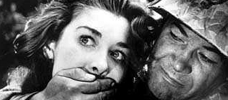
Fear and Desire
1953 -
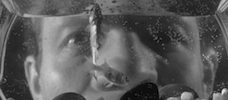
Killer’s Kiss
1955 -
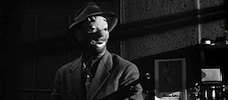
The Killing
1956 -
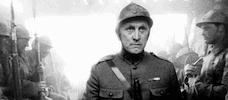
Paths of Glory
1957 -
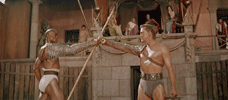
Spartacus
1960 -

Lolita
1962 -
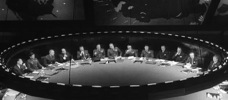
Dr. Strangelove or: How I Learned to Stop Worrying and Love the Bomb
1964 -

2001: A Space Odyssey
1968 -
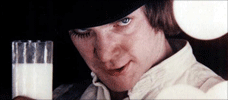
A Clockwork Orange
1971 -
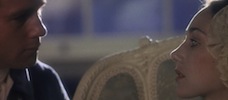
Barry Lyndon
1975 -
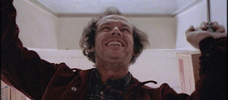
The Shining
1980 -
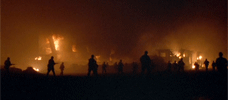
Full Metal Jacket
1987 -
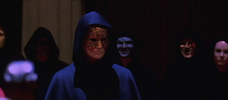
Eyes Wide Shut
1999 -

A.I.
2001
We don’t do comments anymore, but you may contact us here or find us on Twitter or Facebook.



